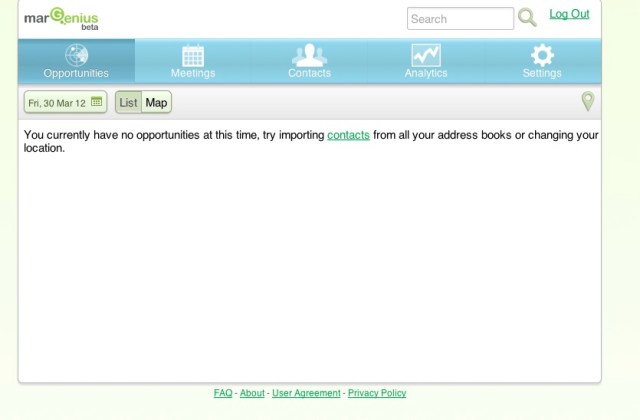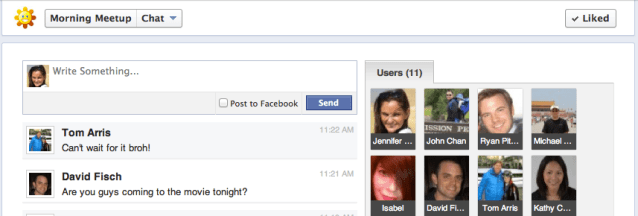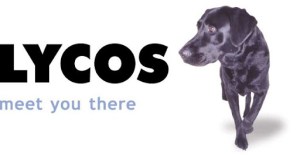I would normally rather have a root canal instead of write about the issue of women in technology. I just find most essays on this really tedious and obvious. (Sorry Alexia.)
But I do want to point one thing out. When I went to my first Y Combinator Demo Day three years ago, there was one woman. At this week’s Demo Day, there were six companies with one or all female founders among the 66 startups in the class.
I’m going to keep this post simple. No complaining. Less navel gazing. Just more role models. So here are the women of Y Combinator and they are awesome. (Update: We’re missing two at the moment, but they will be added soon hopefully. They are Tracy Young of PlanGridand Somaira Punjwani of MedMonk.)
And ladies, if you’re interested in joining the next class, the deadline just passed. But there are two classes a year, so the next one will come up soon.
 Nikki Durkin, 99Dresses
Nikki Durkin, 99Dresses
Durkin wrote her first business plan when she was eight years old. As a girl growing up in the Australian countryside, she desperately wanted a horse. After begging didn’t work, she biked down to her local co-op, determined the price of hay, calculated out operational expenses and wrote a cost-benefit analysis, even sticking in a risks section just in case the horse died.
“Ever since then, I’ve been pretty good at figuring out how to get what I want,” she said.
At 15, she and her thirteen-year-old brother started their first online business called KultKandy, where they designed T-shirts and drop shipped them from China.
While in college, she came up with a concept around dress swapping. She put her idea on Facebook and sent it out to friends in Sydney. In less than three weeks, suddenly 20,000 women signed up from around the country.
“It wasn’t really planned out to the nth degree, but it really resonated,” said Durkin, who is now 20 years old. “Girls absolutely loved it.”
The idea was to have a market where women post pictures of their clothing and swap it. The seller would set the price and handle shipping costs. Instead of using a real currency, Durkin wanted to use a virtual one so that the experience would really feel guilt-free. She asked the community for a name for the virtual currency, and they came up with “Buttons,” for which she now charges $1 a piece.
Within four months, women had uploaded 4,500 dresses and sold 3,500. She hadn’t even heard of Y Combinator until a business adviser Matt Barrie, who is the chief executive of Freelancer.com, told her about it.
“I told him that I’d love to get into the American market but I didn’t have any of the connections or a tech team,” she said. She rounded up a technical co-founder, applied, got in and moved all the way from Australia to the Bay Area. “There’s a lot of potential here,” she said.
Olga Vidisheva, Shoptiques
After making her way to the U.S. as a teenager from Kyrgyzstan and Moscow following the collapse of the Soviet Union, Vidisheva didn’t have much money to pay for living expenses and tuition at pricey Wellesley College. So she modeled on the side, doing everything from wearing Ben Sherman to appearing in vacuum cleaner ads.
Little did she know, that experience would pay off years down the road. Today she’s running Shoptiques, an e-commerce play that brings high-end boutiques online. Even before Demo Day, the company’s seed round was snapped up by three of Silicon Valley’s top tier venture firms including Greylock Capital, Andreessen Horowitz and Benchmark Capital.
Vidisheva’s modeling helped her understand how to present merchandise and do high-end photography for her clientele.
“Very highly curated models can work well,” she said, pointing to models like Fab, a design-centric flash sales site. “We’re creating a market for tastemakers.”
Shoptiques handholds sometimes very tech shy fashion boutiques onto the web. Vidisheva’s startup eats the up-front costs of building the e-commerce presence and photographing the apparel. The company sends these shops the shipping labels, provides the tracking analytics and handles payment processing. Naturally, Shoptiques intends to make its money back through a revenue share on sales. It’s just launched with 50 stores around the U.S.
Vidisheva isn’t just a pretty face. She graduate Phi Beta Kappa and was one of two women out of around 100 men in her investment banking group at Goldman Sachs. In business school, she researched the plan for what would become Shoptiques for well over a year.
“I saw this huge gap in the market,” she said. “I wouldn’t have been able to breathe if I wasn’t doing this business.”
Paul Graham, Y Combinator’s co-founder, paired her with some alums who were behind Anyvite, an events invitation startup that came out of a mid-2008 class. Dan and Jeff Morin were thinking about next steps with their company, and Graham suggested they meet Vidisheva. After trial run where they worked together for a few weeks, they joined full-time on the startup.
“PG is amazing at figuring out people who will work well together,” she said.
Elli Sharef, HireArt
Growing up in Colombia, Sharef was lucky to have a strong female role model right by her side. Her mother had a Ph.D. in economics
“She’s a strong figure with opinions and she was an intellectual,” Sharef said. “I never thought about being a man or woman. She just told me to be ambitious, to do my thing and try and build something good for the world.”
Sharef’s company is attacking the HR and recruiting space. She’s a co-founder of HireArt, which is trying to ease that first step of sifting through an impossible number of resumes.
HireArt has job candidates actually perform a series of tasks or do video interviews. For example, if an interview candidate says they are an expert in Excel, they can demonstrate their skills on HireArt by creating an Excel model using a dataset.
“I saw how hard it was to hire the right person. Everyone knows that the right person can 10X your team,” she said. “At the same time, it’s equally bad when you don’t hire the right person. It can be really terrible.”
HireArt’s site is growing 40 percent week over week and currently has 238 open positions. The company earns revenue every time a candidate is successfully placed, the way a good recruiter might earn a fee or a salary percentage if they find a good hire.
To get into Y Combinator, Sharef came together with a few friends from her university days at Yale: Dain Lewis and Nicholas Sedlet.
There’s a question of how easy it will be to scale HireArt’s model given the idiosyncrasies of hiring and finding a good cultural fit between employees and employers.
Sharef says that over time, the company will collect more and more data from employers about interview questions or tests that are strong predictors of success.
“We really try to work with data to understand which questions work the best. You can think about it like designing the SATs for different jobs,” she said, pointing out that one of her co-founders has experience working with huge data sets as a commodities trader and quant.
Kathryn Minshew, Alex Cavoulacos and Melissa McCreery of The Daily Muse
This trio met on their first day at consulting giant McKinsey. After finding that they worked well together through their two-year analyst stint, they started thinking about what to do next.
“While we felt like we got a lot of great training at McKinsey, we felt like there wasn’t a go-to resource for young women who wanted career advice,” McCreery said.
They had worked on a previous startup before, but then decided to start over with a new concept called The Daily Muse, a career resources destination for high-achieving young women. They packed it with advice on salary negotiations, interviews and how to manage people for the very first time.
But there was a lucrative piece that was missing — job search. Because the site had started attracting a small, but valuable audience of young women from top-tier universities, employers reached out wondering how they could recruit some of these visitors.
“Talented people choose jobs, not the other way around. So we realized there was a need for us to profile awesome companies,” she said. ”Women and men look at things differently. Women will go to a store and browse. But job search is built around knowing what you want and going after that.”
So The Daily Muse has these immersive company profiles, which tell the story of the company’s culture and explain what it’s like to work there. There are video interviews with current employees and professional photos of the office space. ”We want to be the go-to career resource for young, professional women, and now we’re also helping them discover cool places to work,” she said.
McCreery says that The Daily Muse already has 25 paying companies. Monthly fees are variable, but a ballpark range puts them around $1,500. Then there are another 70 companies that are on the waiting list.
Admittedly, any content-centric play is going to have issues scaling. But McCreery says the team has experience. ”We’ve never seen ourselves as just a media company and we’ve done scaled content before,” she said, saying that the site the team last worked on had 200 writers and a full-time editorial staff of five. The company is working on training three full-time employees to make the company profiles.


 commercial element,” said a spokesperson for Russian search giant Yandex. And at the same time, a lot of investment money and talent has been exported abroad, whether in the form of investments in Facebook, or Russian engineers contracted to work for startups elsewhere.
commercial element,” said a spokesperson for Russian search giant Yandex. And at the same time, a lot of investment money and talent has been exported abroad, whether in the form of investments in Facebook, or Russian engineers contracted to work for startups elsewhere.




 (Yahoo won hundreds of millions from Google on the Overture patent even before Google amassed the bulk of their $67 billion in overall revenues from AdWords)
(Yahoo won hundreds of millions from Google on the Overture patent even before Google amassed the bulk of their $67 billion in overall revenues from AdWords) (the beginning of the end for RIMM)
(the beginning of the end for RIMM)